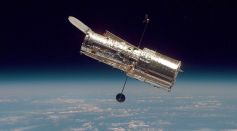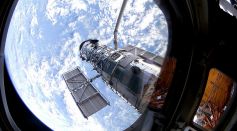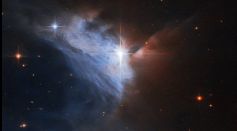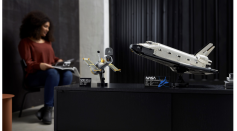Tags: Hubble Space Telescope

Hubble Space Telescope Still Broken: Reason for Being Offline Remains a Mystery to NASA

"Clash of Titans": Despite Glitch, NASA's Hubble Space Telescope Captures Collision Between 2 Galaxies

Hubble Space Telescope Has Been Offline for a Week as NASA Fails to Fix It for the Third Time
Hubble Space Telescope Finds A Galaxy That Lacks Dark Matter
Hubble Space Telescope Glitch Continues on Fourth Day, 1980s Computer the Source of Trouble?

Hubble Space Telescope Dissects Butterfly, Jewel Bug Nebula
Life on Venus: Will NASA Make This Possible on Earth's Twin Planet?

Fast Radio Bursts: Did Spiral Galaxy Arms Cause FRBs?
Red Dwarfs: Can Humans Live on Exoplanets Orbiting the Most Common and Long-Lasting Stars in the Galaxy?

NASA's Hubble Space Telescope Captures Cosmic Cloud from Emission Nebula

NASA Hubble Space Telescope Shares Photos of Jupiter’s Stunning Stripes Showing Evolving Appearance, Great Red Spot Super Storm
NASA Webb Space Telescope Goes Through Final Test Before It Launches Into Space

NASA Hubble Space Telescope Captures an Explosion of a Star; What is This Weird Supernova?

NASA's Hubble Releases New Image of the Stunning "Necklace Nebula"

Hubble Space Telescope Shares Stunning Photo of Unstable Celebrity Star
China's New Space Telescope Has 300 Times Greater Field of View Than the Hubble

NASA Hubble Space Telescope Saw Another Set of Galaxy Thousands of Miles Away!
Hubble Shows Breathtaking Images of Veil Nebula Using New Processing Techniques

Hubble Space Galaxy Shares Photo of Peculiar Galaxy and Earth-Like Exoplanet

Lego Shares Story Behind This Most-Detailed Space Shuttle Discovery, Hubble Telescope Set Yet
Most Popular

Brain Health Aging Guide: Effective Strategies for Cognitive Decline Prevention and Lower Dementia Risk

Mitochondrial Health and Aging: How Cell Energy Drives Modern Anti-Aging Science

How Scientists Use Radio Telescopes to Search for Alien Signals Across the Universe

Can Animals Really Predict Earthquakes and Tsunamis? Understanding Early Warning Clues




